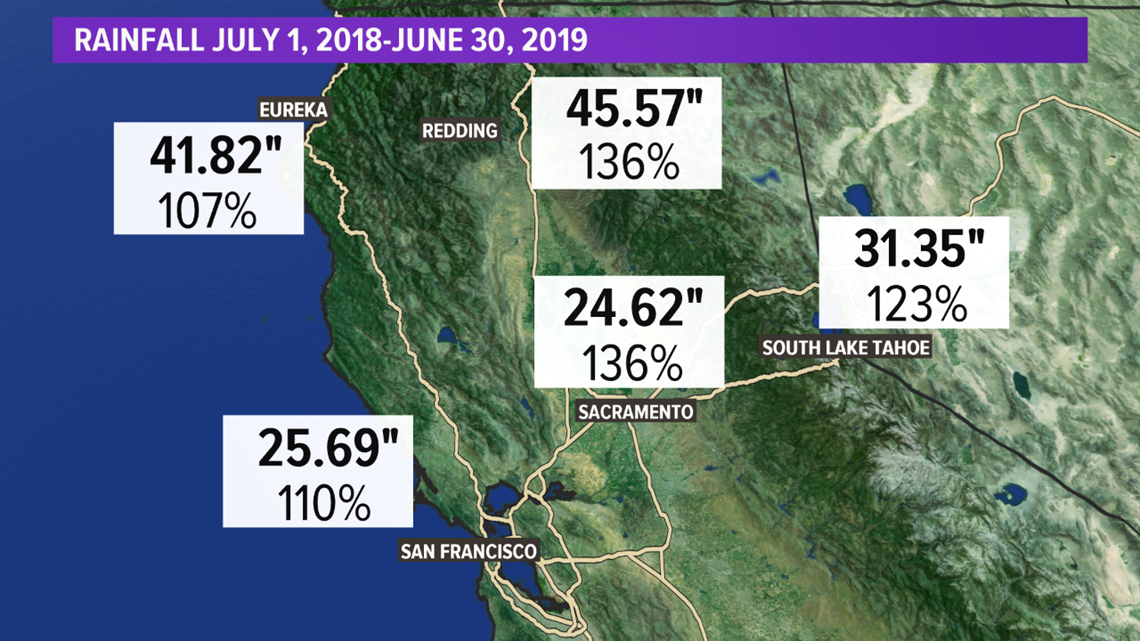


However: Even if rainfall remains fairly constant on a per decade basis, there are three factors which are contributing to increased water shortages: According to the chart (see below) I prepared from the data file, grouping average rainfall by decade, rainfall has been remarkably steady. The long term pattern suggests there is not. Is there major climate change going on here in San Diego as far as rain is concerned? This chart updated annually near the end of the season San Diego Rainfall by Season in inches (July 1 through June 30) If you are looking for official NWS statistics for recent days and months, go to NWS San Diego Forecast Office (climate data). The current official NWS records go back to 1875 perhaps for this reason. I recall it being in something like nine different locations since 1850. Also the rain gage wasn't always at the same exact location, there's a story about this somewhere on the web. Some of the totals in the early years may result from incomplete data. The data was derived from NWS records going back to 1850, the link I use to have here no longer works. Scroll down for notes about recent rain activity and file updating. I try to keep the file "reasonably current". Then open a spreadsheet program and import the data from the saved text file. It is easy to bring the data into a spreadsheet. The data will come up as a separate page. Year, Jan, Feb, Mar, Apr, May, Jun, Jul, Aug, Sep, Oct, Nov, Dec, YearTotal, NextJan, NextFeb, NextMar, NextApr, NextMay, NextJun, SeasonTotalĭOWNLOAD: File is here (sandiegorain.txt). The file is comma delimited, in the format of: I have developed a file of monthly San Diego rainfall data which presents the data by both calendar year AND by season (running from July to June).įor commentary on recent rain events or ongoing rain activity see Weather Notes. Most records are kept by calendar year, but San Diego's weather is highly seasonal with most of the rain falling in the November-March time period. Fall is defined as September, October and November.As a San Diego resident I've found it hard to find a convenient place to find annual rainfall data for San Diego in a useful format. Summer is defined as June, July and August. Spring is defined as March, April and May. Winter is defined as December, January and February. Both LOCA and ChesWx datasets were masked to the boundaries of the Chesapeake Bay watershed before calculating seasonal precipitation values and the spatial resolution of each dataset was preserved. To average across climate models for each grid cell in the LOCA dataset, we employed a weighted average provided by the Northeast Regional Climate Center. We calculated seasonal total precipitation for each season for each year and the averaged values for each season across 30-year periods – 1976-2005, 2006-2035, 2036-2065, 2066-2095 for LOCA data for both RCP 4.5 and RCP 8.-2005, 2006-2017 for ChesWx data. Seasonal total precipitation was determined for each season by summing all daily precipitation events that occurred for each three-month season. Access ChesWx data and learn more about the ChesWx methodology and input datasets. For this study, we utilized ChesWx daily precipitation data over the Chesapeake Bay watershed from 1976 to 2017. Data are available from 1948 to 2017 at 4km spatial resolution. The ChesWx gridded climate datasets contain daily interpolations of precipitation and temperature observations for the Chesapeake Bay watershed, as well as the broader Mid-Atlantic and surrounding regions.


 0 kommentar(er)
0 kommentar(er)
